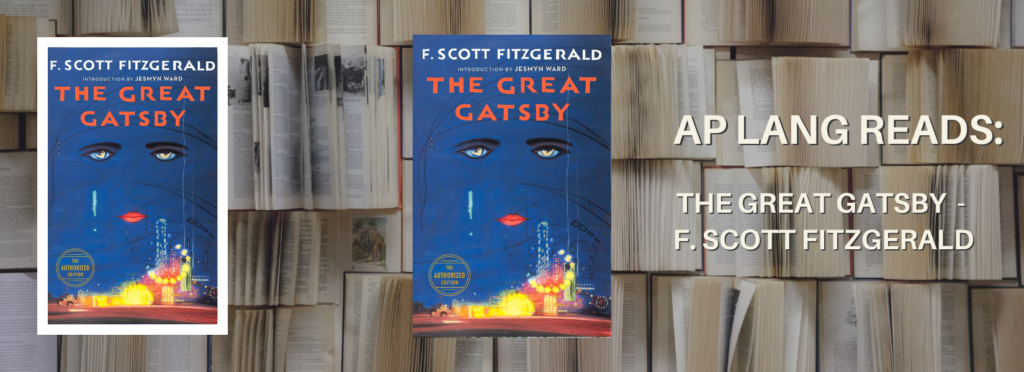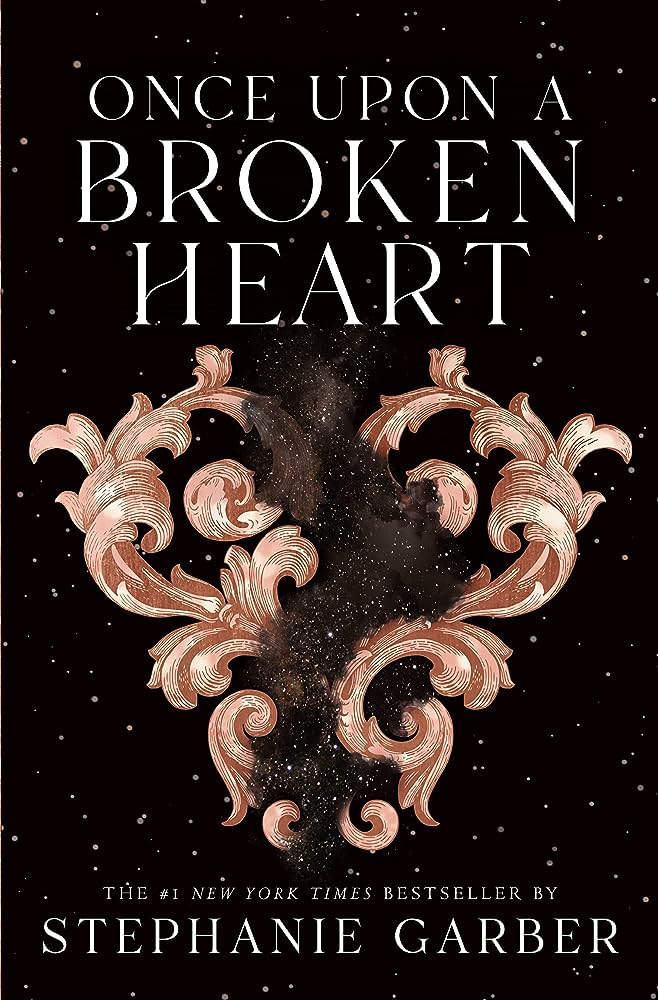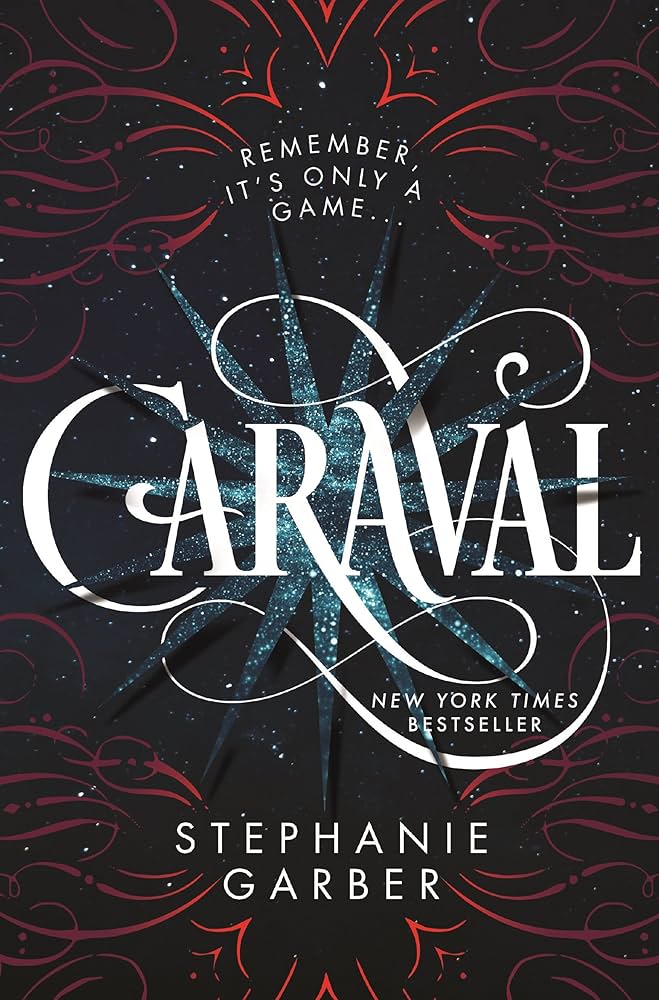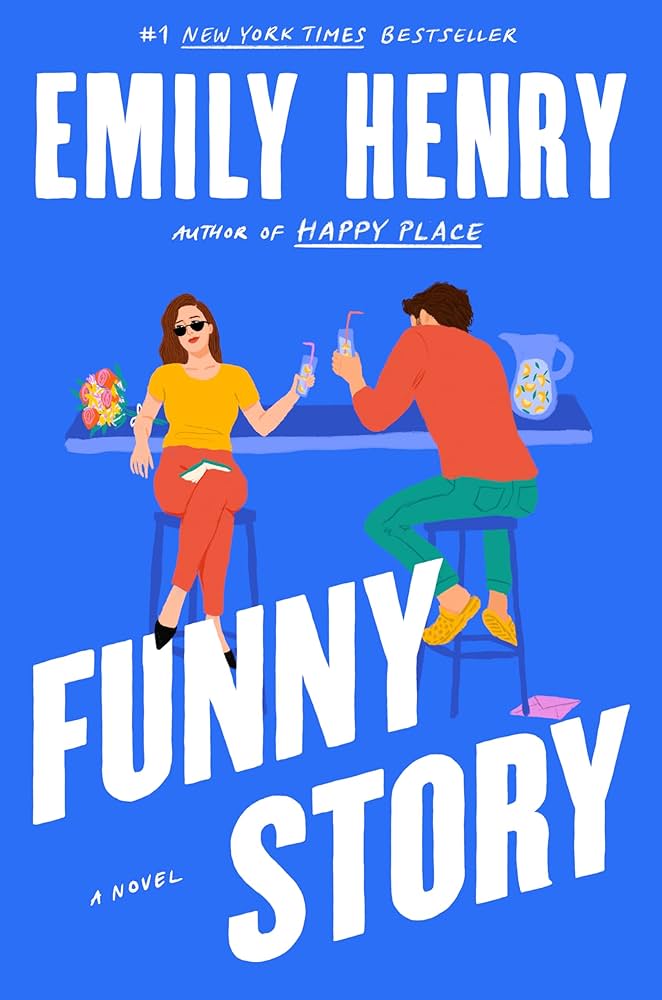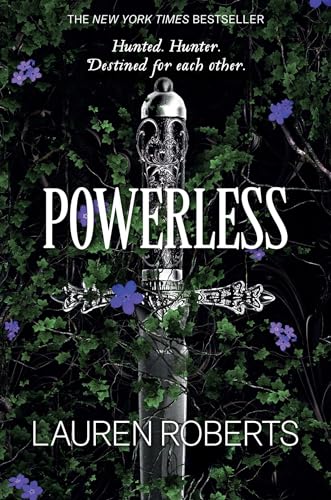AP Lang Reads: The Great Gatsby Book Analysis –
F. Scott Fitzgerald
F. Scott Fitzgerald’s third book, stands as the supreme achievement of his career. This exemplary novel of the Jazz Age has been acclaimed by generations of readers. The story of the fabulously wealthy Jay Gatsby and his love for the beautiful Daisy Buchanan, of lavish parties on Long Island at a time when The New York Times noted “gin was the national drink and sex the national obsession,” it is an exquisitely crafted tale of America in the 1920s.
The Great Gatsby is one of the great classics of twentieth-century literature.
|
Title: |
The Great Gatsby |
|
Author: |
F. Scott Fitzgerald |
|
Publisher: |
Scribner |
|
Genre: |
Modernist Fiction, Tragedy, Historical Fiction, Social Commentary, Romance |
|
Pages: |
180 |
F. Scott Fitzgerald’s The Great Gatsby is a richly layered critique of the American Dream set in the Roaring 1920s, a time marked by opulence, excess, and moral decay. Through its vivid characters and symbolic imagery, the novel unpacks the promise and pitfalls of ambition, love, and the pursuit of success.
“So we beat on, boats against the current, borne back ceaselessly into the past.” ~
F. Scott Fitzgerald
The American Dream:
The Great Gatsby’s central theme revolves around the American Dream—the idea that anyone, regardless of their background, can achieve success and happiness through hard work. Jay Gatsby embodies this dream, transforming himself from a poor farm boy into a wealthy, enigmatic figure. However, Gatsby’s version of the dream is flawed, rooted in his obsession with wealth and his idealized love for Daisy Buchanan.
Fitzgerald uses Gatsby’s journey to both critique and romanticize the dream. On one hand, Gatsby’s determination and ambition showcase the allure of reinvention and the belief in limitless possibilities. On the other hand, his failure to achieve genuine happiness—symbolized by the ever-distant green light on Daisy’s dock—reveals the hollowness of a dream based solely on materialism and social status.
In chapter 7, we see Gtasby’s entire life unraveling and the series of unfortunate events that follow his death. He was known for following his American Dream until his last breath, yearning for Daisy’s life. His entire life was built on fake lies, materialistic wealth, and an obsession with Daisy. His confrontation with Tom symbolizes the wrongful moral attitudes of Gatsby. This chapter is evidence of the illusion that the American Dream can sometimes be hard to grasp and can lead to toxic behaviors.
In today’s world, the American Dream has evolved. While success remains a cornerstone, there is now a stronger emphasis on equality, personal growth, and finding purpose beyond wealth. Fitzgerald’s cautionary tale remains relevant, urging readers to question the true meaning of success.
The Dichotomy of Settings:
Fitzgerald’s contrasting settings—the Midwest and the East—serve as metaphors for opposing values. The Midwest represents stability, honesty, and a grounded way of life, while the East Coast embodies glamour, excess, and moral corruption.
For Nick Carraway, the narrator, the Midwest is a place of comfort and integrity, a refuge from the chaos of the East. Gatsby, however, views the East as an opportunity for transformation and upward mobility. His mansion in West Egg symbolizes “new money,” while the Buchanans’ East Egg home represents the old-money aristocracy. Despite his wealth, Gatsby remains an outsider, unable to penetrate the rigid social boundaries of East Egg. This geographic divide highlights the societal barriers that persist even in a land that promises equality.
Symbolism and Hooks:
Fitzgerald’s use of symbolism deepens the novel’s exploration of its central themes:
- The Green Light: The light at the end of Daisy’s dock symbolizes Gatsby’s unattainable dream, representing hope and ambition but also the futility of his pursuits.
- The Valley of Ashes: This desolate wasteland between West Egg and New York City reflects the moral and social decay hidden beneath the surface of wealth and privilege. It is a stark reminder of the inequality and hopelessness experienced by those left behind in the pursuit of the American Dream.
- The Eyes of Dr. T.J. Eckleburg: These eyes loom over the Valley of Ashes, symbolizing a godlike figure or the judgment of a morally bankrupt society driven by consumerism and greed.
Through these symbols, Fitzgerald critiques the emptiness of a society that equates success with material wealth, exposing the darker side of ambition.
Character Analysis:
Jay Gatsby:
Gatsby is introduced through other characters mentioning him. Nick finally meets him in Ch. 3. Gatsby represents the hope of attaining happiness and fulfillment through the Dream. Gatsby’s pursuit of Daisy at any cost demonstrates the relentless drive of those who seek to fulfill the American Dream through wealth and social status. His toxic and obsessive behavior leads to a series of unfortunate events. FG claims that though Gatsby was crafted to be a genuine man with an authentic and unworldly desire, his way of achieving his American Dream was still laid on the foundation of corruption and materialism. Gatsby’s efforts to win Daisy back eventually led to his demise. His tragic death and fulfillment of his American Dream symbolize that sometimes, goals can not be achieved through obsession. Fitzgerald uses Gatsby’s life and death to argue that the Dream, especially based on status and worldly desires, is ultimately unattainable and hollow. For example, although Gatsby throws huge parties, nobody attends his funeral, showing that, in reality, he doesn’t have real relationships.
Nick Carraway:
New to New York, Nick serves as the narrator and moral compass for the reader. Throughout the story, he evaluates the choices and behaviors of the group. His relationship with each character grows and changes. Through Nick, FG claims that a society lacking a moral high ground destroys people, preventing them from attaining their Dream. Nick becomes more engrossed and disillusioned with his surroundings. He is the narrator for Daisy and Gatsby’s reunion and Tom’s natural jealousy. Nick turns to a path of moral corruption, making it harder to turn his back on the beauty of health and The American Dream. He is going off of FG’s claim that obsession over wealth, status, and achieving the Dream can lead to the decay of logic. At the novel’s end, Nick tries to detach himself from the city’s wonders and becomes disenchanted by Gatsby’s death. He returns home, preserving his opinion that the American Dream can be dangerous, destructive, and sometimes unattainable.
Daisy Buchanan:
Nick’s cousin, Daisy, represents the stereotypical “trophy wife” to an abusive husband. She plays the “beautiful fool” role to maintain her social status and position. Through Daisy, FG claims that people make conscious decisions (and sacrifices) for personal gain. Daisy’s reunion with Gatsby reignites old emotions, but her hesitance to leave Tom highlights her attachment to social status and material security. Through Daisy, we see glimpses of Gatsby’s past and the critiquing of his obsession with her. We see how FG claims that following The American Dream can sometimes lead to toxic behaviors and actions. We see how Daisy continues her superficial lifestyle, erasing all ties to Gatsby and diminishing her relationship with Tom. She refuses to give up her privileged life and lets the media blame Myrtle’s death on Gatsby. Moreover, she doesn’t attend his funeral, again, to preserve her personal fulfillment, supporting FG’s claim that once wealth enters life, it’s hard to pursue genuine happiness.
Tom Buchanan:
Daisy’s husband, Tom represents the stereotypical power hungry male figure who controls the women in his life, He acts with impunity and doesn’t hide his actions/decisions. FG uses Tom to portray the dark side of attaining the dream, which focuses on wealth. Tom finds out about Gtabsy and Daisy’s affair, resulting in a hypocritical response. He manipulates Daisy by using emotion to sprout threads of doubt in her mind. He refuses to accept that Daisy does not love him. Tom feels a sense of superiority over Gatsby, emphasizing FG’s claim that status and wealth can lead to a drive to stay in a position of power. Tom’s indifference to Gatsby’s death and his decision to leave without remorse reflect his lack of empathy, showing how his wealth and status left him emotionless. He personifies FG’s claim that chasing greed can lead to extreme moral decay.
Jordan Baker:
A professional golfer, she is extremely shallow, and her path to achieving the American Dream is fulfilled through lies and deceit. She represents society’s fickle nature. FG uses Jordan to highlight the claim that while many people achieve the Dream through hard work, some, like her, cheat their way through to the top. Jordan becomes closer to Nick, but her attitude and uncaring nature stay. She helps Gatsby and teams up with Nick to help Gatsby and Daisy reunite. FG uses Jordan to emphasize how a wrong approach to The American Dream overlooks the consequences of dishonesty. Due to her breakup with Nick, she detaches herself from the current events. Revealing her true nature and FG’s claim about the moral ambiguity of those who manipulate to achieve their desires. She doesn’t have much emotional depth or desire to pursue a true connection with those around her.
Myrtle Wilson:
Tom’s mistress, Myrtle, represents the fake attitude and lustful priorities of the desire people have for wealth and status. She is extremely unhappy in her current marriage to George, a guy from humble beginnings, so she instead chooses to continue her relationship with a narcissistic Tom. Myrtle’s increasing desperation to rise above her social class is evident in her attachment to Tom. Her desires are very selfish and hollow as she continues her affair, withstanding Tom’s abuse. Fitzgerald uses Myrtle’s choices to illustrate the destructive nature of aspiring to wealth and status at any cost. Myrtle’s tragic death because of her ties with a corrupt family goes off of FG’s claim that the American Dream is often an illusion that ends in suffering for those who chase it without self-awareness.
George Wilson:
George represents the people who are unable to fulfill their American Dream and are left behind by the people surrounding them. His wife cheats on him because of his low status and income. He represents the juxtaposition of positions of characters in the Eggs and the Valley, who don’t have the same resources or opportunities. As George becomes aware of Myrtle’s affair, his helplessness describes those who lack wealth and status and how they are treated like dirt in privileged societies. Fitzgerald uses George’s despair to show that the American Dream is inaccessible for many trapped by socioeconomic limitations. George’s tragic death, which is the result of heartbreak, shows the darker side of a society divided by wealth. Fitzgerald suggests that the American Dream is not only out of reach for some but can also lead to tragic ends for those connected to it unwillingly.
Fitzgerald’s Critique of Society:
The Jazz Age, or Roaring ’20s, is vividly depicted through lavish parties, consumerism, and the characters’ obsession with status. Fitzgerald uses this setting to critique the era’s moral decline, portraying a society that values wealth over integrity. Gatsby’s tragic end serves as a warning against the dangers of chasing an idealized version of success at the expense of authenticity and human connection.
The Novel’s Enduring Legacy:
The Great Gatsby has earned its place as a classic of American literature due to its timeless exploration of human ambition, love, and disillusionment. Fitzgerald’s lyrical prose and use of symbolism offer profound insights into the flaws of the American Dream and the societal dynamics of his time. The novel’s critique of materialism and its emphasis on the importance of genuine relationships continue to resonate with modern audiences.
For readers today, Gatsby’s story serves as both an inspiration and a cautionary tale, challenging us to define success not by wealth or status but by the depth of our connections and the authenticity of our pursuits.
|
Characters: |
5/5 |
|
Setting: |
5/5 |
|
Writing: |
4/5 |
|
Plot and Themes: |
5/5 |
|
Overall: |
4.7/5 |
